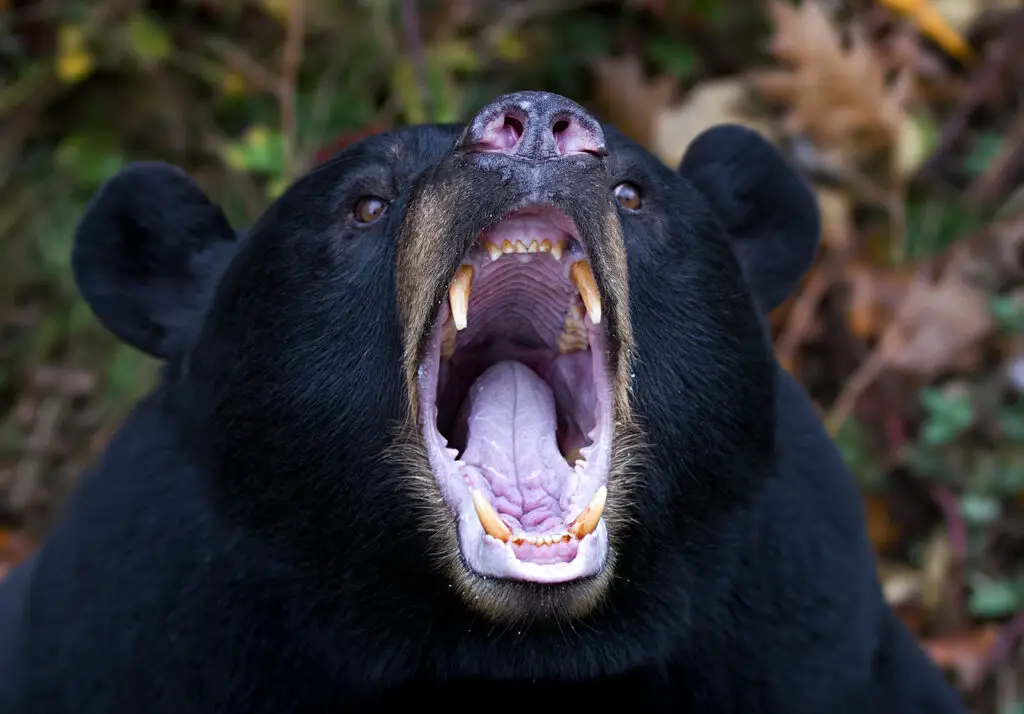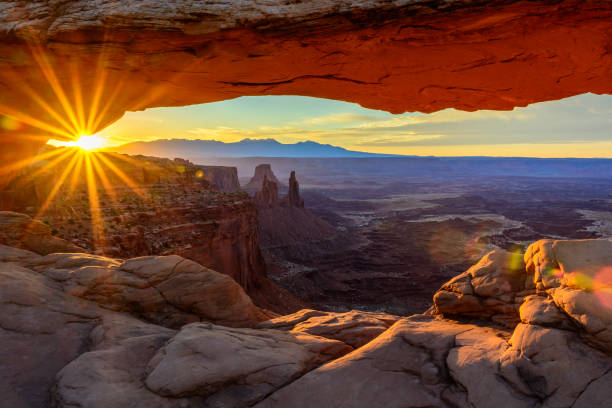These national parks might look like slices of paradise, but don’t let the stunning views fool you. They’re the stomping grounds of nature’s deadliest predators, where a wrong step could make you dinner. From venomous snake bites to bear maulings and alligator ambushes, these are the places where your survival instincts better kick in—or else. Ready to enter the wild? These parks prove why the great outdoors isn’t always great for your health.
1. Yellowstone National Park

Yellowstone is a stunning deathtrap, where grizzly bears, wolves, and bison roam freely. Grizzlies have attacked hikers without warning, their claws leaving gruesome scars—or worse. Bison, deceptively calm, have launched unsuspecting tourists sky-high, with several deaths reported. In one horrifying case, a hiker was dragged into the woods by a grizzly, leaving rescuers to find only shredded gear. Add boiling geysers and unpredictable terrain, and Yellowstone becomes a predator’s playground—and a visitor’s worst nightmare.
2. Grand Canyon National Park

Adobe
This iconic canyon hides deadly dangers beyond its cliffs. Rattlesnakes lurk along trails, their bites capable of causing organ failure. Scorpions are another menace, stinging campers who dare to sleep outdoors. Heatstroke claims lives every summer, with temperatures soaring past 120°F. In one tragic case, a tourist collapsed mid-hike and couldn’t be saved. The Grand Canyon is breathtaking, but it’s also a place where nature doesn’t forgive even the smallest mistakes.
3. Glacier National Park

Shutterstock
Glacier National Park in Montana is a paradise for thrill-seekers—and a nightmare for the unprepared. Grizzly bears have torn through campsites, while mountain lions stalk hikers with chilling precision. In one infamous case, a lone hiker was found mauled after startling a bear on the trail. The icy cliffs and slippery paths have also led to dozens of fatal falls. Glacier’s beauty is undeniable, but one wrong move could turn your adventure into a tragedy.
4. Everglades National Park

YouTube
The Everglades in Florida is a predator’s domain, where alligators and Burmese pythons reign supreme. Pythons have been found with deer—and even alligators—in their stomachs. Cottonmouth snakes slither through the swamps, striking anyone unlucky enough to cross their path. In one terrifying encounter, a kayaker was attacked by a gator that flipped his boat. The Everglades’ serene waters hide a world where you’re always being watched—and hunted.
5. Denali National Park

Flickr
Denali is Alaska’s untamed wilderness, where moose and grizzlies will happily ruin your day. Moose attacks are surprisingly frequent, often ending in trampling injuries, while grizzly encounters can be fatal. In one chilling story, a photographer was mauled while taking wildlife shots too close to the beasts. Denali’s freezing temperatures and remote trails only add to the danger. Here, even seasoned adventurers know that one mistake could cost them everything.
6. Great Smoky Mountains National Park

Shutterstock
The Smokies may seem tranquil, but there is danger everywhere. Black bears roam the forests, raiding campsites and occasionally attacking hikers. Copperhead snakes and timber rattlesnakes also slither through the dense undergrowth, striking when least expected. One camper had a close encounter with a bear that charged into his tent. Between unpredictable wildlife and treacherous terrain, this popular park is a hotspot for nature’s darker side.
7. Katmai National Park

Katmai in Alaska is famous for its bear-viewing opportunities—and for good reason. The massive brown bears here are impressive, but they’re also unpredictable. Visitors have been mauled after getting too close for the perfect photo. In one terrifying incident, a hiker ignored warnings and was dragged away by a bear in front of horrified onlookers. Katmai’s remote location and harsh environment ensure that any mistake could be your last.
8. Big Bend National Park

YouTube
Big Bend in Texas is a sprawling desert landscape hides plenty of dangers. Rattlesnakes are everywhere, their venom capable of causing severe tissue damage or death. Black bears also roam the area, occasionally making their way into campsites. In one shocking case, a rattlesnake bite sent a hiker into convulsions before help could arrive. The extreme heat and unforgiving terrain make Big Bend as deadly as it is beautiful.
9. Rocky Mountain National Park

The Rocky Mountains are home to elk, bears, and mountain lions—all capable of inflicting serious harm. Elk attacks, particularly during mating season, are surprisingly common, with hikers gored or trampled after getting too close. Black bears have raided campsites, and mountain lions have been known to stalk hikers for miles. One chilling report described a mountain lion dragging a jogger into the woods. This park’s beauty comes with a serious side of danger.
10. Zion National Park

YouTube
Zion’s towering cliffs and narrow canyons aren’t its only threats. Rattlesnakes blend perfectly into the dusty terrain, striking hikers who don’t watch their step. Flash floods are another killer, sweeping away everything in their path, including visitors. In one horrifying incident, a group of hikers was caught in a flood, clinging to rock walls to survive. Zion’s stunning views are unforgettable—but so is the danger lurking in its shadows.
11. Olympic National Park

Olympic National Park in Washington State has rainforests and rugged coastline are teeming with hazards. Black bears and mountain lions stalk the dense woods, occasionally attacking unsuspecting hikers. Along the coast, deadly rip currents have swept swimmers out to sea. One visitor recounted being chased by a bear for miles before escaping. With its remote trails and unpredictable weather, Olympic is as dangerous as it is enchanting.
12. Sequoia and Kings Canyon National Parks

These neighboring parks in California are known for their massive trees—and their dangers. Black bears frequently raid campsites, with some confrontations ending in injuries. Rattlesnakes hide in the underbrush, striking when disturbed. One terrifying encounter involved a camper waking up to find a bear clawing at their tent. The parks’ steep cliffs and high altitudes add to the risks, making every hike a calculated gamble.
13. Canyonlands National Park

Canyonland in Utah has a wide range of desolate beauty which hides lethal dangers. Rattlesnakes and scorpions are a constant threat, while the sweltering heat can lead to fatal dehydration. In one horrifying case, a hiker lost their way and succumbed to the elements before rescue teams could reach them. The park’s remote location means help is often hours—or days—away. Canyonlands is a stark reminder that the desert doesn’t play nice.
14. Yosemite National Park

Yosemite in California’s granite cliffs and lush valleys are home to black bears, rattlesnakes, and countless accidents. Bears frequently raid campsites, and one tragic incident involved a hiker who fell while trying to escape a bear encounter. Slippery rocks near waterfalls have also led to dozens of fatalities. The park’s beauty draws millions of visitors, but its dangers ensure some never make it home.
15. Hawaii Volcanoes National Park

Hawaii Volcanoes offers a unique mix of danger, from lava flows to toxic gas emissions. Nēnē geese might seem harmless, but their aggressive behavior can catch visitors off guard. One haunting story involves a tourist who ventured too close to a lava flow, succumbing to the heat and fumes. The park’s breathtaking landscape is a reminder that nature’s beauty often comes with a deadly edge.
Think you can handle the wild? These parks prove that Mother Nature doesn’t take prisoners. Whether it’s a grizzly’s claws, a rattlesnake’s fangs, or a deadly fall, these national parks aren’t for the faint of heart. If you dare to visit, remember: in the wild, you’re just another part of the food chain.


